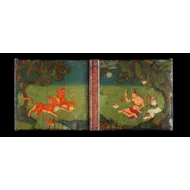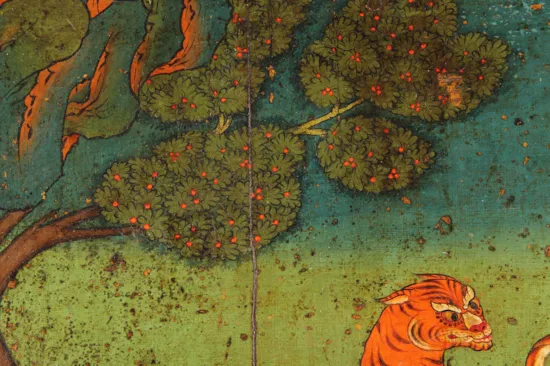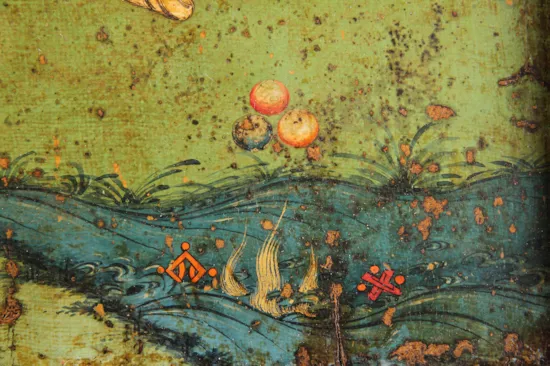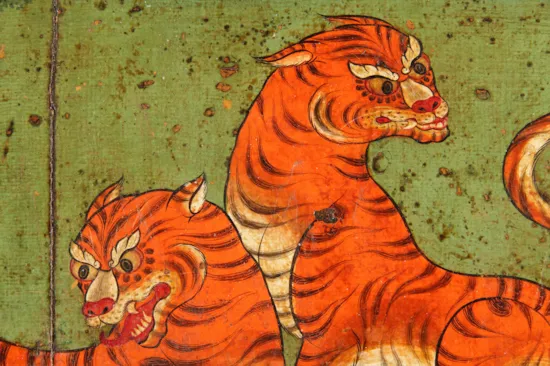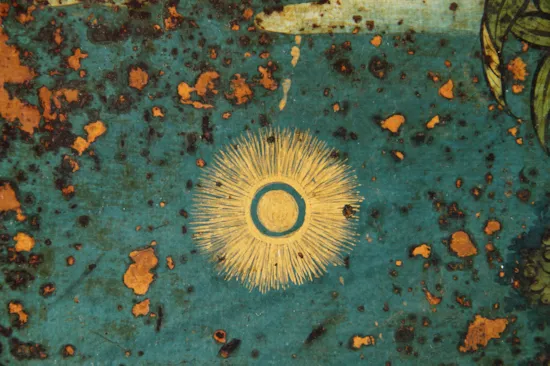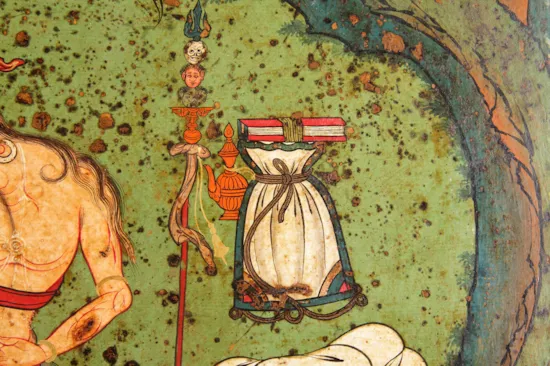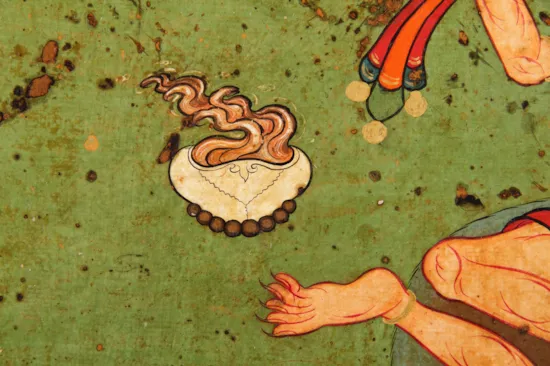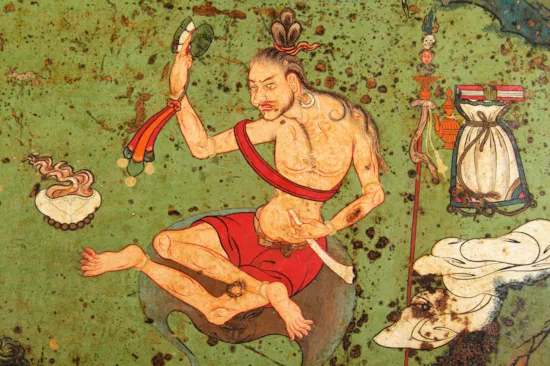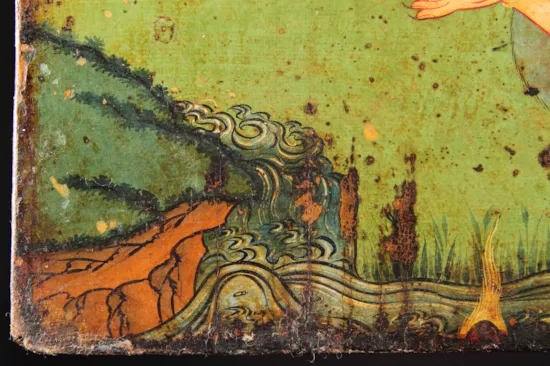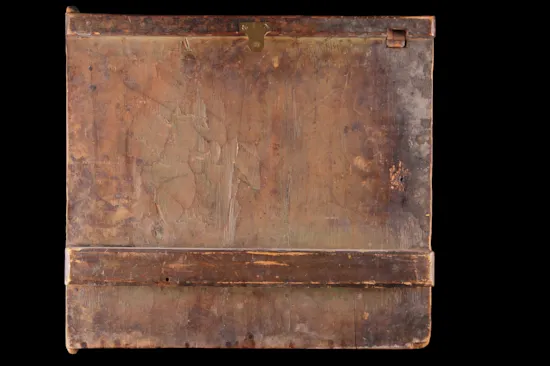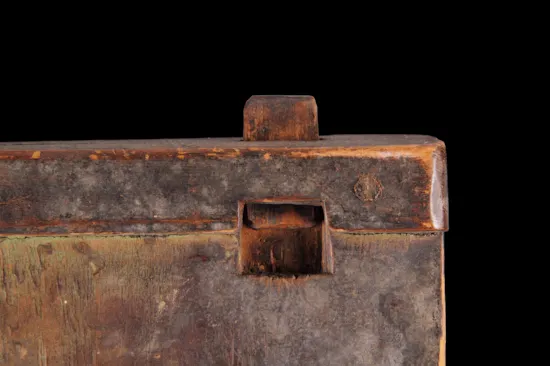Rare Pair of Tibetan Painted Shrine Doors
A Rare Pair of Tibetan Painted Shrine Doors Depicting a ‘Mahasiddha’ or Great Adept Seated in a Cave Holding a Skull Drum ‘Damaru’ and a Human Thigh Bone Trumpet ‘Kangling’ with a ‘KapÄla’ shown on the ground next to him and a Ritual Staff ‘Khatvanga’ with Skulls Sacred Text Offering Vase and Robes a Lotus Blossom above Three Deer in the Distance
The Other Panel Showing Two Tigers with Their Cub in a Mountainous Landscape Beneath a Tree by a River the Male Watching the Ascetic Performing his Rituals
Tempera on cloth laid on wood
17th Century
Size: 41cm high, 48cm wide - 16 ins high, 19 ins wide and 41cm high, 44.5cm wide - 16 ins high, 17½ ins wide
The Other Panel Showing Two Tigers with Their Cub in a Mountainous Landscape Beneath a Tree by a River the Male Watching the Ascetic Performing his Rituals
Tempera on cloth laid on wood
17th Century
Size: 41cm high, 48cm wide - 16 ins high, 19 ins wide and 41cm high, 44.5cm wide - 16 ins high, 17½ ins wide
Mahasiddha’s were Indian masters who transmitted the tantric lineages to the early Tibetan translators. Most of them were not monks and those who were did not wear conventional robes. They lived in the jungles with the animals and acquired food from wherever they could. They are depicted in Tibetan art as wild, wrathful looking characters who expressed enlightenment in unconventional ways. The tiger is a symbol of the energy and fierce boldness of the enlightened mind and the tantric path.
The seated long haired ascetic is shown wearing a meditation belt around his shoulder and may represent Milarepa, Tibet’s most beloved saint who lived a completely itinerant life. In his youth he was vengeful by nature and practised sorcery, but later filled with remorse for his evil ways he turned to Marpa, a teacher in the south of Tibet, who had studied for long periods in the great Buddhist monasteries of eastern India. After undergoing an exceptionally arduous apprenticeship Milarepa was initiated into the secrets of Buddhist meditation, and in particular into the mystical practices of Naropa, Marpa’s Indian master. Naropa was a Mahasiddha or Great Adept, a title bestowed on 84 especially holy saints known for their extrasensory insights and superhuman powers. Milarepa’s command of Naropa’s teaching gave him astonishing physical strength and enabled him to withstand the bitterly cold Himalayan winters. He left Southern Tibet and continued his spiritual guest in the solitude of the mountains. Wandering westward he came to a cave near Nyalam and spent such long periods in meditation that it is said there are impressions in the rock where he sat.
The seated long haired ascetic is shown wearing a meditation belt around his shoulder and may represent Milarepa, Tibet’s most beloved saint who lived a completely itinerant life. In his youth he was vengeful by nature and practised sorcery, but later filled with remorse for his evil ways he turned to Marpa, a teacher in the south of Tibet, who had studied for long periods in the great Buddhist monasteries of eastern India. After undergoing an exceptionally arduous apprenticeship Milarepa was initiated into the secrets of Buddhist meditation, and in particular into the mystical practices of Naropa, Marpa’s Indian master. Naropa was a Mahasiddha or Great Adept, a title bestowed on 84 especially holy saints known for their extrasensory insights and superhuman powers. Milarepa’s command of Naropa’s teaching gave him astonishing physical strength and enabled him to withstand the bitterly cold Himalayan winters. He left Southern Tibet and continued his spiritual guest in the solitude of the mountains. Wandering westward he came to a cave near Nyalam and spent such long periods in meditation that it is said there are impressions in the rock where he sat.
Rare Pair of Tibetan Painted Shrine Doors
